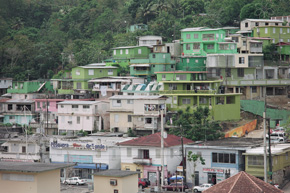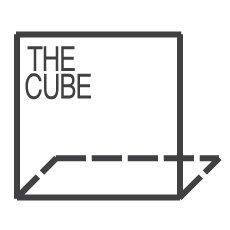
Chemi Rosado-Seijo
The houses of Naranjito, located outside of San Juan, Puerto Rico, follow the contour of the mountain beneath them, rising and falling along the ridges. This is the first thing Chemi Rosado-Seijo noticed from the foot of the hillside; not the boarded windows or trash-lined streets–signs of a declining economy in what was once a thriving community founded by coffee-plantation workers. And so, in an effort to draw attention to the uniquely organic shape of this small town–and to instill a sense of civic pride among residents who were increasingly disillusioned with their economic situation–he began to paint all of Naranjito’s houses green.
During the project, Rosado-Seijo asked homeowners for permission to paint their homes a shade of green of their choosing. Many declined at first, primarily because the color is associated with the independistas, a local group that sought succession from the United States. But gradually, as the color popped out of the terrain and complemented the hues of the surrounding trees, they began to agree on condition that he also repaint other parts of the property such as stoops and fences in different colors. He enlisted local youth to help him paint, and held workshops, conferences and other events that brought positive press coverage to a community inundated daily with reports of the endemic unemployment and crime that had characterized the village.
Throughout his practice, Rosado-Seijo transforms public perception by presenting new approaches to the urban experience. In 2005, he was commissioned by the New York-based Art in General to explore Manhattan on skateboard. He then created a map of the best skate sites and routes he located during his travels; his 15-foot diagram proposed an alternate transportation option as well as a new aesthetic understanding of the city. El Cerro was presented at the 2002 Whitney Biennial.
[ About Living as Form | Curator Statement | About the artists ]


